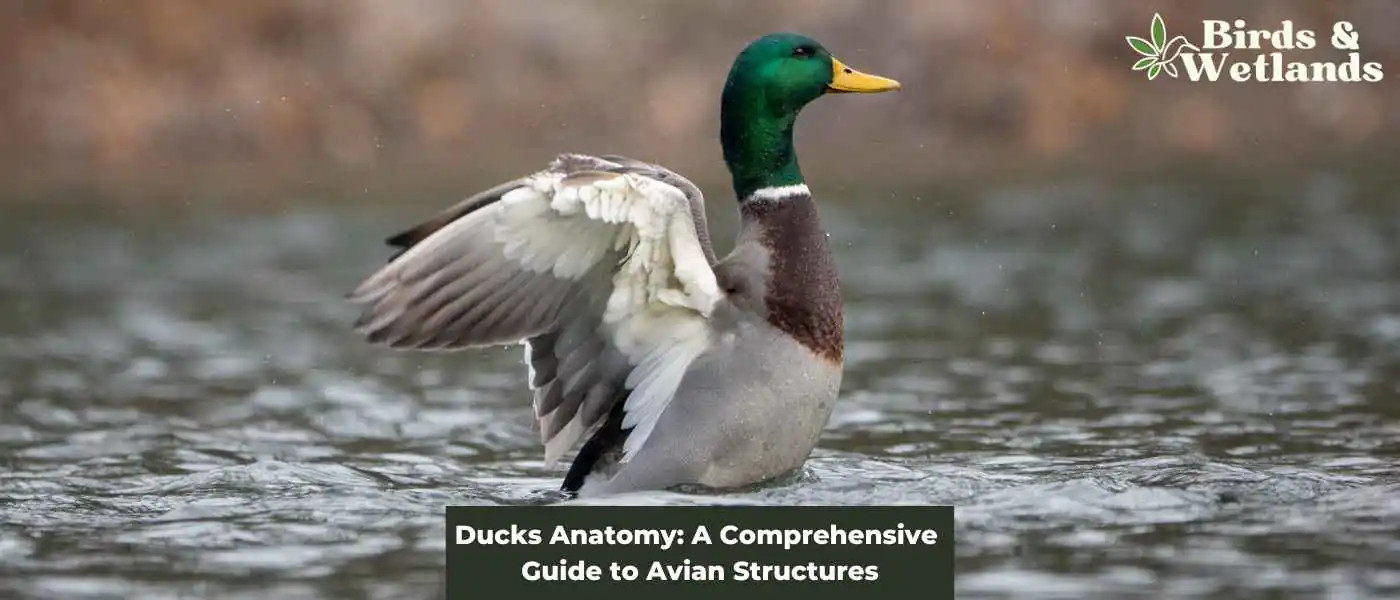Ducks have unique anatomical features that allow them to thrive in aquatic environments. Some of their most notable characteristics include webbed feet for efficient swimming, waterproof feathers for insulation and buoyancy, a specialized bill for filtering food, and a compact body for streamlined movement.
External Anatomy
Feathers
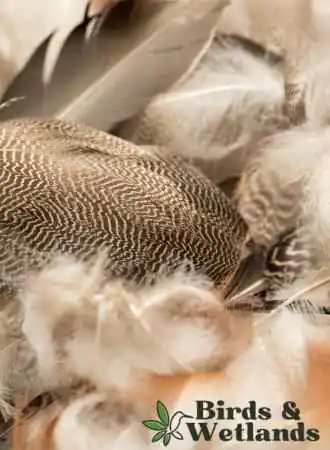
Ducks, like other birds, are covered in feathers which provide insulation, waterproofing, and aid in flight. The feathers are made up of different types: contour feathers, which give the duck its shape and color, down feathers for insulation, and flight feathers for movement. Ducks constantly preen their feathers to maintain their structure and waterproofing capabilities.
Wings
Duck wings are structured with multiple layers of flight feathers, which allow them to fly efficiently. The primary feathers are the longest, while the secondary feathers are shorter. Ducks also have a layer of covert feathers, located at the top of the wings, that protect the flight feathers. Wing structure in ducks allows them to take off quickly and perform agile aerial maneuvers, while still being capable of floating on the water surface.
Beak and Bill
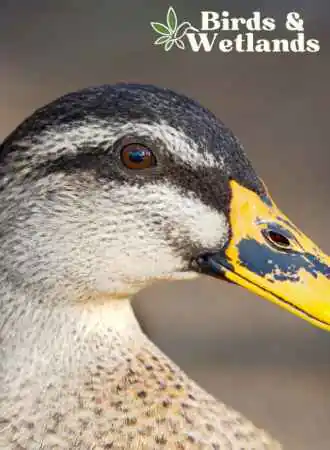
The beak and bill of a duck are essential for feeding and preening. Ducks have a wide, flat bill with a sharp nail at the tip. The inside edge of the bill is serrated, which helps to grasp food items such as insects and plants. Ducks also have a structure called the bean, located at the base of their bill, which aids in the filtering of water.
Coloration and Patterns
Duck coloration varies between male and female ducks. Male ducks, or drakes, often display brighter and more vibrant colors that serve to attract a mate, while females, or hens, have subdued tones that allow them to blend into their surroundings for camouflage. Both males and females may have distinguishing patterns on their feathers such as stripes, spots, or patches.
Webbed Feet

Ducks are known for their webbed feet, which provide them with excellent swimming capabilities. The webbing between the toes of the duck’s foot allows for efficient movement through water and assists in navigating wet, slippery surfaces. Ducks also have strong legs, which provide the necessary support and stability for walking on land.
Tail
The tail of a duck plays an important role in steering and balance during flight. Ducks have a set of tail feathers, called rectrices, that fan out and help in navigating while flying. At the base of the tail, ducks have a specialized gland called the uropygial gland, which secretes an oil that is spread across the feathers during preening for waterproofing and maintenance.
Internal Anatomy
Digestive System
The digestive system of ducks plays a crucial role in breaking down and absorbing nutrients from their food. It begins with the bill, which helps them filter food out of the water. The food then passes through the esophagus and enters the crop, a temporary storage pouch. From the crop, it moves to the gizzard, where it is ground into smaller particles. Ducks have a unique digestive organ called the ceca, which helps break down complex carbohydrates. The nutrients are then absorbed by the small intestine, and any waste is excreted through the cloaca.
Reproductive System
In ducks, the reproductive system is responsible for producing eggs and facilitating fertilization. Female ducks have an ovary and oviduct, while males have testes and a penis. The fertilization process occurs internally after mating. Once the eggs are fertilized, they are laid and incubated for about 28 days until they hatch.
Heart and Circulatory System
Ducks possess a four-chambered heart similar to mammals. The primary function of the heart is to pump blood throughout the body, supplying oxygen and nutrients to tissues and removing waste products. The circulatory system in ducks is divided into two loops: systemic circulation (to the body) and pulmonary circulation (to the lungs). Ducks have a higher heart rate than humans, helping them maintain adequate oxygen supply during flight.
Respiratory System
The respiratory system of ducks comprises the trachea, lungs, and air sacs. Air is inhaled through the nostrils located on the bill and travels down the trachea to the lungs. Ducks have unique respiratory adaptations that allow them to extract more oxygen from the air than other birds. Their lungs are connected to air sacs that function as bellows, ensuring a constant flow of fresh air even during exhalation. This efficient system allows ducks to meet the high oxygen demands of flight.
Musculoskeletal System
The musculoskeletal system in ducks is comprised of bones, muscles, and connective tissues. This system plays a vital role in providing structural support, protection for internal organs, and enabling movement. Notable features of ducks’ musculoskeletal system include:
Skeleton: Ducks have a lightweight and sturdy skeleton, with specialized adaptations such as a fused lumbosacral mass and strong humerus for flight.
Feathers: Various types of feathers make up the duck’s plumage, which provides insulation, waterproofing, and helps with flight.
Muscles: Ducks have powerful breast muscles (pectoralis major) that enable them to flap their wings and achieve lift for flight. They have strong leg muscles for swimming and walking on land.
Feet: Ducks have webbed feet, allowing for efficient propulsion in the water and stability on land.
Duck Anatomy Posts
-

Do Ducks Have Noses? Understanding Duck Anatomy
-

Why Do Ducks Pant? Understanding Duck Behavior and Health
-

Do Ducks Have Gizzards? Unraveling Avian Anatomy
-

The Curious Case of Duck Bills: Do Ducks Have Beaks or Bills?
-

Why Do Ducks Have Feathers? (Nature Explained)
-
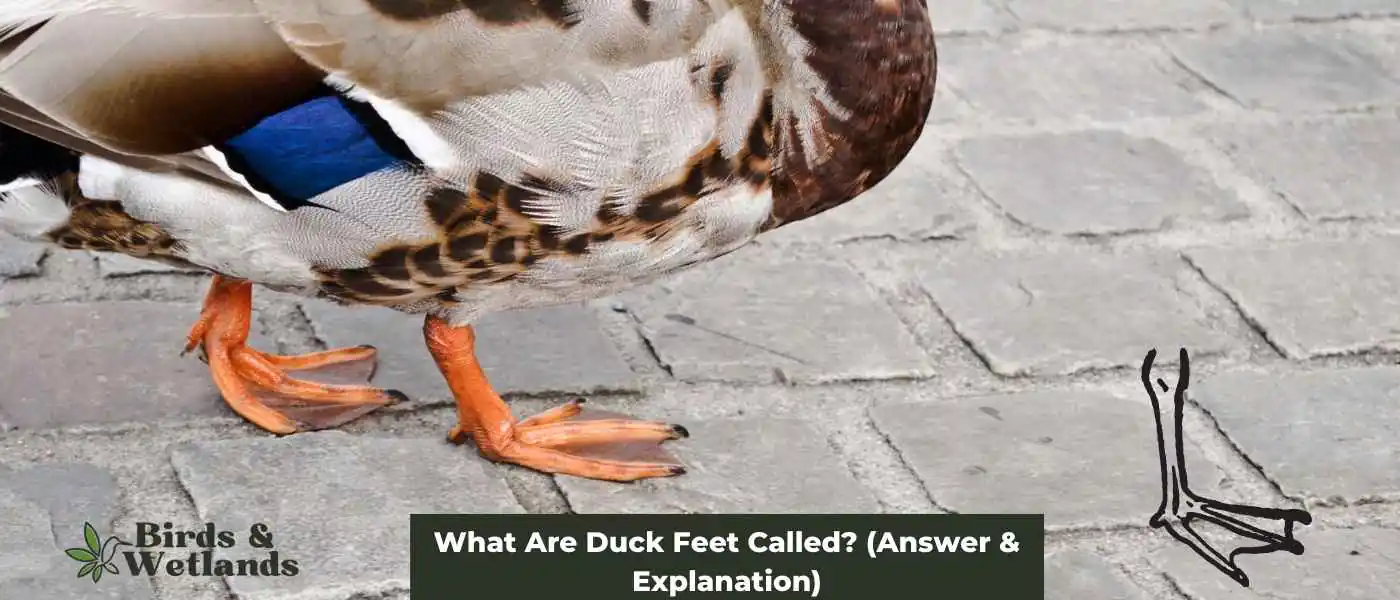
What Are Duck Feet Called? (Answer & Explanation)
-
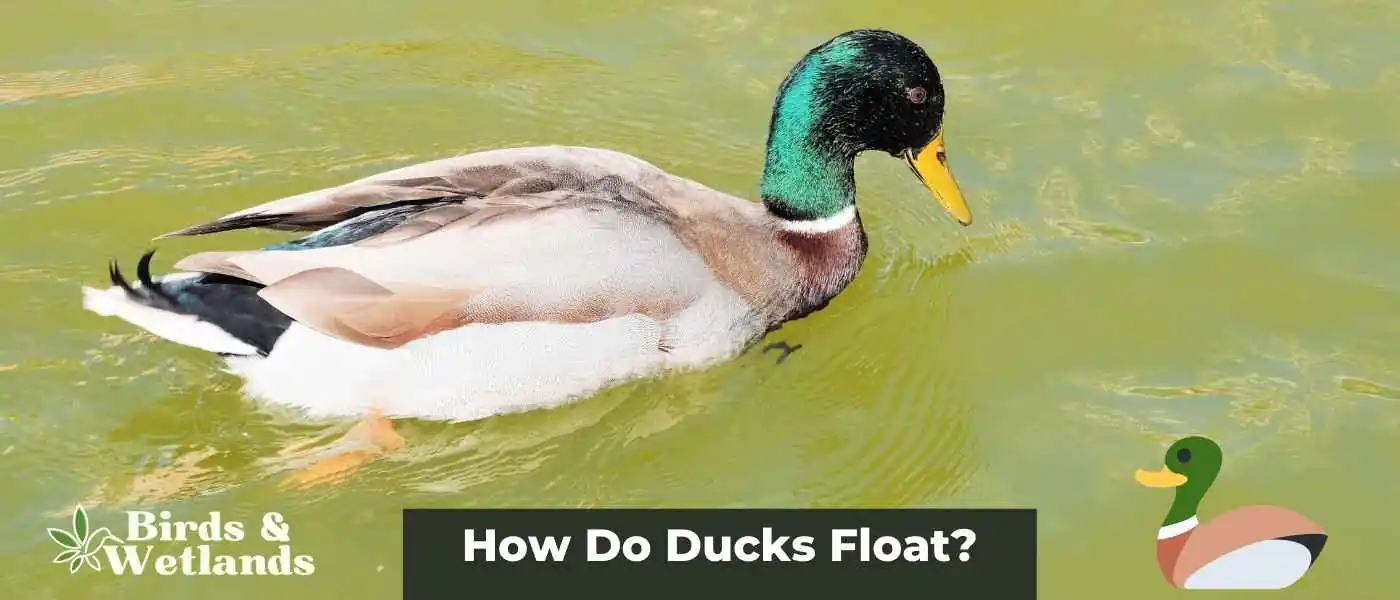
Floating Feathers: How Do Ducks Float?
-
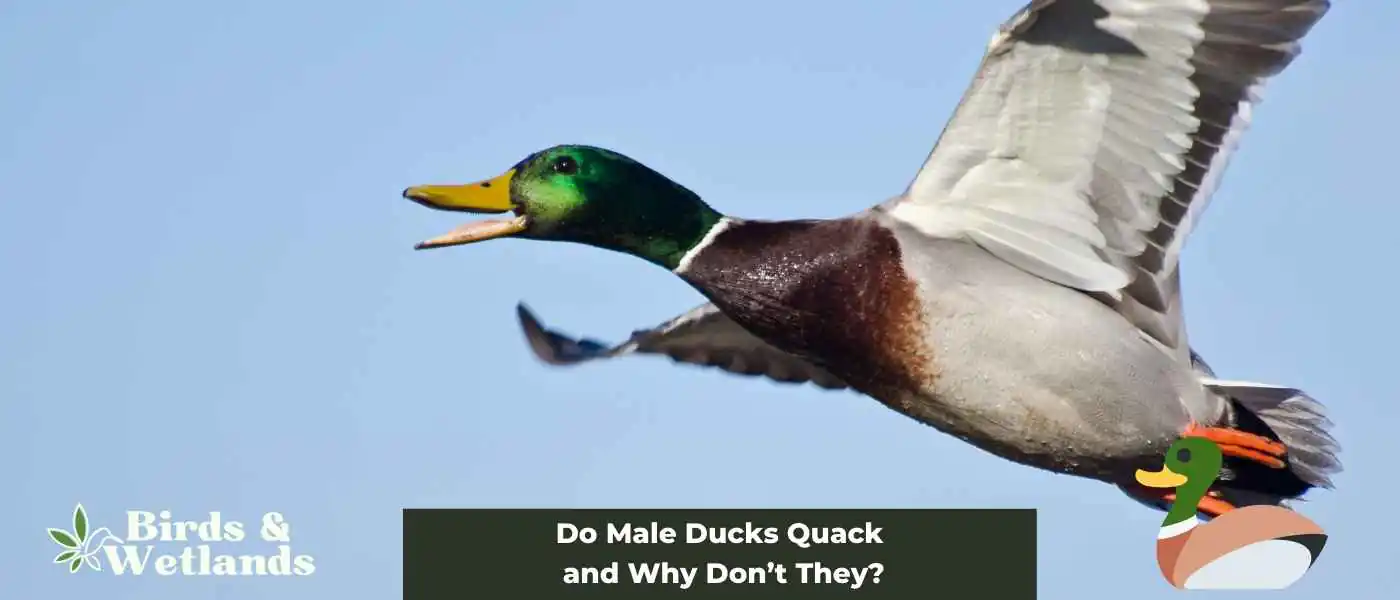
Quacking Across Genders: Do Male Ducks Quack?
-

Wagging and Waddling: Why Do Ducks Wag Their Tail?
-
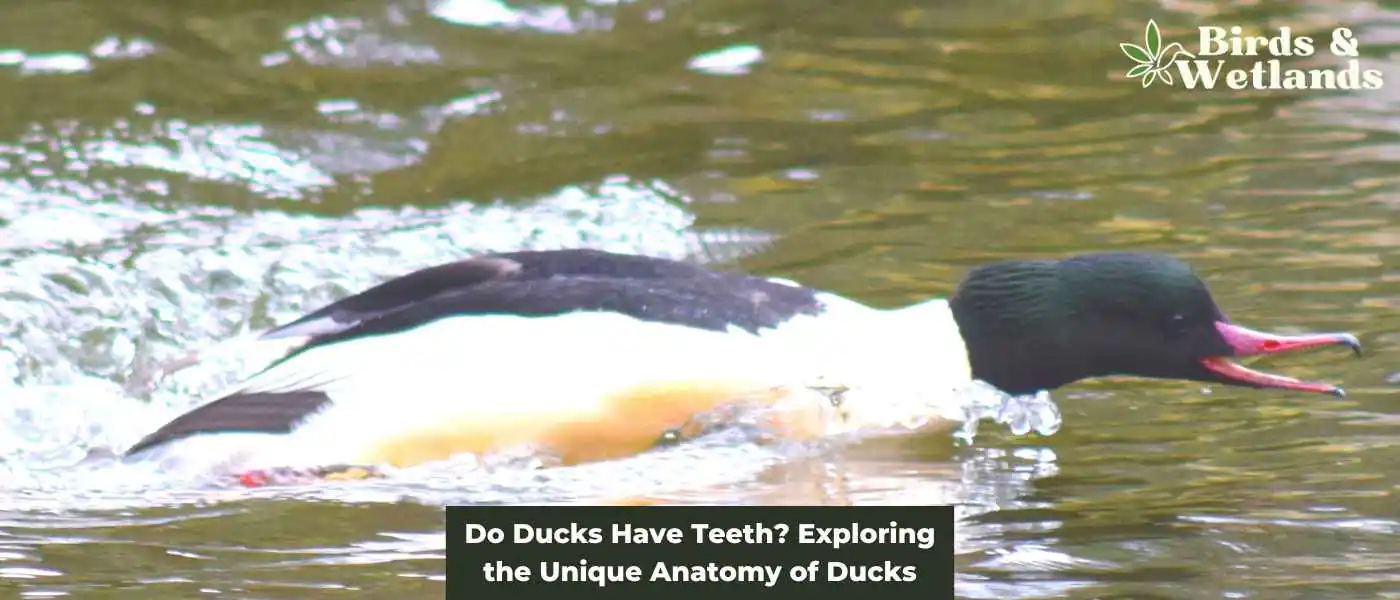
Do Ducks Have Teeth? Exploring the Unique Anatomy of Ducks
Duck Senses and Behavior
Eyes and Vision
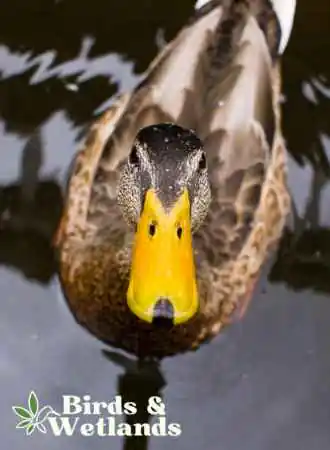
Ducks possess highly adapted eyes and vision, which are crucial for their survival in their natural environments. Their eyes are located on the sides of their head, allowing for a wide field of view and excellent peripheral vision, helping them detect potential predators more readily. The eyes contain more rod cells, which improve their low-light vision and play a significant role in aiding navigation during migration.
Ducklings, like their adult counterparts, rely heavily on their vision for survival. Immediately after hatching, they imprint on their mother and follow her using their sight. Ducklings learn to recognize their mother’s features, such as the crown on her head or distinct color patterns.
Preening
Preening is an essential behavior observed in ducks, as it helps maintain the health and functionality of their feathers. Ducks possess a bilobed uropygial gland located near the base of their tail, which secretes oil used in preening. Using their bill, ducks apply the oil throughout their feathers, which provides waterproofing and keeps them in optimal condition for flight and insulation.
Duck anatomy plays a significant role in preening. The bill, with its slightly thicker tip called the nail, allows ducks to reach individual feathers and carefully spread the oil. The leg structure also provides support and balance, helping the duck reach different areas of its body during the preening process.
To summarize, the senses and behavior of ducks are crucial for their survival and adaptability in their respective habitats. Importantly, ducks rely on their well-developed eyes and vision, and engage in regular preening to maintain their plumage.
Anatomical Adaptations
Evolution and Swimming

Ducks have evolved to have special anatomical features that allow them to thrive in aquatic environments. One of the most distinct characteristics is their webbed feet, which enable them to propel efficiently through water. Ducks have a unique skeletal system with features like ossified tracheal rings that enable catching by neck and fused vertebrae called the notarium. The notarium provides rigidity for swimming and helps the bird maintain an effective posture while moving in water.
Flight and Feathers
Feathers play a crucial role in the various adaptations of ducks. They have an oily coating that serves a dual purpose: it prevents water from settling in their feathers and keeps them dry, which helps the ducks stay warm and decreases their body weight. This reduction in weight improves their movement both through water and in the air.
The wing anatomy of a duck differs from that of a chicken, as it has various types of feathers such as flight feathers, remiges, and coverts. The remiges are either primary feathers attached to the metacarpal and phalanges bone or secondary feathers attaching to the ulna bone. These unique adaptations allow ducks to be efficient in flight.
Ducks also exhibit some interesting respiratory adaptations, particularly in diving ducks. The accumulation of carbon dioxide does not stimulate breathing as it does in land mammals. Instead, when the duck is underwater, oxygen is drawn from stored hemoglobin and myoglobin in their blood and muscles, rather than from the respiratory system.
In summary, ducks display a range of anatomical adaptations that have evolved to support their diverse habitats and behaviors, with specific emphasis on swimming and flight abilities. These adaptations include their webbed feet, unique skeletal structures, feather adaptations, and respiratory systems that enable them to thrive in aquatic environments.
Diet and Feeding Mechanisms
Aquatic Plants and Insects
Ducks consume a large variety of food sources which mainly include aquatic plants, insects, and small invertebrates. Their diet may also comprise fish, worms, and other crustaceans. The anatomy of their bills is well-adapted to collect feed from water, catch flying insects, and root out underground morsels, aided by a nostril that allows them to dabble in shallow water and breathe simultaneously.
Dabbling and Diving

Duck species can be classified into two distinct categories based on their feeding mechanisms: dabbling ducks and diving ducks. Dabbling ducks, such as the ones from the tribe Anatini, tip up to feed. They do so by submerging their heads and upper bodies under the water and using their bills to strain food particles through their specialized lamellae. Lamellae are comb-like structures within the ducks’ bills that allow them to efficiently filter-feed.
Diving ducks, such as pochards, stifftails, and sea ducks, seek out food below the water’s surface. They dive deeper to find their food and are able to swim underwater using their legs as propulsion. Grazing on the surface is another feeding mode employed by species such as Canada geese and American wigeons.
| Feeding Mechanism | Example Species | Typical Food Sources |
|---|---|---|
| Dabbling | Mallard, American Wigeon | Aquatic plants, insects |
| Diving | Pochard, Stifftail, Sea Duck | Fish, crustaceans, plants |
After ingestion, the duck’s digestive system processes the consumed food items. Food moves through the upper digestive tract and enters the ventriculus, or gizzard. The gizzard is a thickly-muscled organ that essentially functions as a duck’s “teeth.”
It often contains grit, such as sand or small stones, which aids in mechanically breaking down large food items. The proteins in the diet are broken down into amino acids during digestion, which the duck then utilizes to build its own body proteins like those found in muscle and feathers.
Comparison with Other Bird Species
Chickens and Turkeys
In comparison to ducks, chickens and turkeys exhibit some marked anatomical differences. The overall body structure of a chicken is more compact, with a shorter neck and legs than those of a duck. Female chickens, or hens, also possess a unique reproductive system that differs from that of a duck, allowing them to produce eggs more frequently.
Turkeys, on the other hand, are larger than ducks and chickens, with a more robust frame and longer legs. Their feather structure also sets them apart; while ducks have waterproof feathers, turkeys have heavier and denser plumage.
Despite these physical differences, all three species have a similar skeletal structure, as demonstrated in a study analyzing limb proportions and sternum in chickens, mallard ducks, and Muscovy ducks.
Anatomy Differences between Chickens, Turkeys, and Ducks:
Body structure: Ducks have a more elongated body compared to chickens; turkeys are larger and more robust.
Neck and legs: Ducks have longer necks and legs than chickens; turkeys have longer legs but shorter necks.
Feathers: Ducks have waterproof feathers; turkeys and chickens do not.
Reproductive systems: Hens, or female chickens, have a unique system for producing eggs more frequently than ducks.
Other Waterfowl
Ducks are closely related to geese and share several anatomical features such as webbed feet for efficient swimming and waterproof feathers for insulation. However, there are key differences between ducks and geese such as their size, shape, and even lifespan. Geese are generally larger than ducks, with longer necks and a more streamlined body shape. Their life spans also tend to be longer than those of ducks.
Swans, another type of waterfowl, are also closely related to ducks but tend to be the largest in size and have more elongated necks. Similar to geese, swans also boast longer life spans compared to ducks.
Anatomy Differences between Ducks, Geese, and Swans:
Size: Geese and swans are generally larger than ducks.
Body shape: Geese have a more streamlined body shape compared to a duck’s body; swans have an even more elongated body and neck.
Lifespan: Geese and swans tend to live longer than most ducks.
Body parts
Neck length: Swans have the longest necks, followed by geese, and then ducks.
Duck’s head: A duck’s head is smaller than a goose head, goose heads often appear elongated and streamlined, while duck heads tend to be more compact and rounded.
Beak: The shape of the beak can vary, but in general, goose beaks are longer and wider than those of ducks. Goose beaks may also have a more prominent hook at the tip, depending on the species.
Features: Geese often possess a distinctive “knob” or “bulb” at the base of their beaks, which is absent in ducks. Additionally, geese may have more pronounced and defined facial markings, such as stripes or patches, compared to ducks.
Tail: Most ducks have a short tail compared to geese and swans who possess a longer tail. Their tails are generally compact and rounded, with feathers that are less prominent in terms of length and display. This shorter tail allows for enhanced agility in flight and maneuverability in the water, which are important for their aquatic lifestyle. In contrast, geese and swans often possess longer, more pronounced tails that contribute to their graceful appearance and can be displayed during courtship rituals or in-flight displays.
Legs and Feet: Geese and swans have longer legs and larger webbed feet compared to ducks who have short legs. Their legs are positioned farther back on their bodies, which allows them to walk on land more easily.
Unique Reproductive Anatomy
Cloaca and Phallus
Ducks have a unique reproductive system compared to other birds and mammals. Both males and females possess a cloaca, which serves as a common chamber for the passage of waste and reproductive materials. However, male ducks, also known as drakes, have a unique and complex phallus structure for mating purposes. Unlike mammalian phalluses, duck phalluses are supported by lymph rather than blood or muscle, and some can grow up to 40 centimeters in length.
The phallus shape is also quite distinct, with a corkscrew-like appearance. Interestingly, the reproductive organs of both drakes and females have a corkscrew shape with ridges that spiral clockwise (in female ducks) and counter-clockwise (in drakes). The reason for their opposite spiraling direction remains a mystery to biologists.
Mating and Reproduction
The act of mating in ducks can be quite intense and sometimes even aggressive. When mating, the drake will force his phallus into the female’s cloaca with a sudden, ballistic-like motion. This process can be quite fast, as drakes have been known to fully extend their phallus within seconds.
Female ducks, on the other hand, have developed an intricate reproductive system in response to this intense mating process. Their vagina is long and twisted, featuring numerous spirals and dead-end pockets. It is speculated that these dead-end pockets help the female ducks prevent forceful insemination, ultimately giving them control over the fertilization process.
Overall, these unique reproductive anatomical features allow ducks to navigate the challenges of mating as well as provide control over the reproductive process. The exact functions and mechanisms involved in these structures may still hold mysteries, but the adaptations show how evolution can drive the development of unique and intricate solutions to reproductive challenges faced by different animal species.
Male Duck vs Female Duck
In terms of anatomical differences, female ducks (known as ducks or hens) and male ducks (known as drakes) exhibit several distinctions:
Size and Weight: In many duck species, males tend to be larger and heavier than females. This size difference can vary among species.
Plumage: Male ducks often showcase more vibrant and striking plumage while females have different colors which are less bright. They may have brightly colored feathers, intricate patterns, or distinctive markings, particularly during the breeding season. Female ducks typically have more subdued or camouflaged plumage, which helps them blend into their surroundings for nesting and protection.
Feathers: Male ducks may possess additional ornamental feathers, such as elongated tail feathers or curled feathers on the back. These ornamental feathers are often absent in females.
Coloration: Males frequently exhibit brighter and more diverse coloration, while females tend to have more uniform and mottled coloration. The specific color patterns and variations depend on the duck species.
Bills and Calls: In certain duck species, males have more pronounced and colorful bills compared to females. Additionally, male ducks often emit distinctive vocalizations, called “quacks” or specific mating calls, which are generally different from the vocalizations of female ducks.
Identifying Duck Species by Anatomy
In this section, we will discuss the key anatomical features of two popular duck species: Mallards and Muscovy Ducks.
Mallards
Mallards are a widely known duck species, present throughout North America and Eurasia, often found in ponds, parks, and wetlands. The most distinctive feature of the Mallard is the drake or male duck, which is easily identified by its iridescent green head, contrasting with its gray flanks and black tail-curl. Female Mallards, on the other hand, are generally mottled brown in color, with a dark stripe through their eyes. Some key aspects of Mallards’ anatomy include:
Bill: The drake’s bill is yellow, while the female’s bill is a darker orange color.
Wings: Both male and female Mallards have blue speculum feathers, which can be seen on their wings when in flight.
Legs and Feet: Mallards have orange-colored legs and feet, which distinguish them from some other duck species.
Muscovy Ducks
Muscovy Ducks are native to Central and South America, but they have also been introduced to various parts of North America and Europe. These ducks have unique facial features compared to other duck species, with a pronounced and bare, red or black colored “mask” around their eyes. Here are some key aspects of their anatomy:
Bill: Muscovy Ducks have a broad bill, which is generally black or dark gray.
Wings: The wings of a Muscovy Duck are typically black or dark gray with lighter feathers mixed in, and they lack the colorful speculum found in Mallards.
Legs and Feet: Muscovy Ducks have dark-colored legs and feet, known as flippers. These flippers provide them with excellent swimming abilities.
Crest: Some Muscovy Ducks have a small crest of feathers on the top of their heads.
By understanding the anatomical differences detailed above, one can more easily identify Mallards and Muscovy Ducks in the field.
Anatomy in Duck Conservation
Duck conservation efforts greatly benefit from a thorough understanding of bird anatomy, particularly the unique features of duck anatomy.
One distinguishing aspect of ducks is their feathers, which are divided into two types: down feathers and contour feathers. Down feathers are soft and insulating, providing warmth and buoyancy to ducks. Contour feathers, on the other hand, are stiffer and serve to maintain streamlined body contours, aid in waterproofing, and provide support during flight. Some contour feathers may exhibit iridescent properties, giving ducks a shimmering appearance.
The nostril in ducks is another essential feature, as it helps them to breathe while swimming and diving. These specialized nostrils contain a valve that can be closed underwater, preventing water from entering the nose. The lower mandible of ducks is uniquely suited for foraging in water. It’s shaped to efficiently scoop up food, and its edges contain lamellae, comb-like structures that filter out unwanted particles while retaining edible morsels.
Ducks also possess specialized feet with webbing between the three front toes, which allows them to move efficiently in water. These palmate feet provide propulsion and maneuverability during swimming, while the small and elevated hind toe, called the hallux, provides additional balance.
In terms of wing anatomy, ducks have flight feathers called remiges, which are attached to the metacarpals and phalanges bones. These feathers, along with secondary feathers that attach to the ulna bone, allow for efficient flight and maneuverability in the air.
Finally, the vibrant orange coloration often found in duck bills and feet plays a role in attracting mates and signaling good health. This distinctive hue comes from carotenoids, pigments acquired through their diet, which serve as an indicator of overall fitness and contribute to reproductive success.
Understanding these unique features of duck anatomy is essential in conservation efforts, as it allows researchers and experts to better assess the health and behavior of duck populations. By appreciating the intricacies of these birds’ anatomy, conservationists can make more informed decisions to ensure their continued survival and well-being.
Duck anatomy diagram


